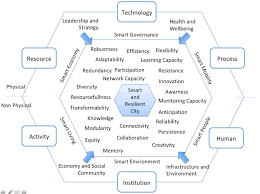Courtesy : Architects, engineers and environmental consultants Education
Waste handling and transport
Main articles: Waste collection vehicle, Waste collector, and Waste sorting

Moulded plastic, wheeled waste bin in Berkshire, England
Waste collection methods vary widely among different countries and regions. Domestic waste collection services are often provided by local government authorities, or by private companies for industrial and commercial waste. Some areas, especially those in less developed countries, do not have formal waste-collection systems. # ISO certification in India
Waste handling practices
Curbside collection is the most common method of disposal in most European countries, Canada, New Zealand, United States, and many other parts of the developed world in which waste is collected at regular intervals by specialized trucks. This is often associated with curb-side waste segregation. In rural areas, waste may need to be taken to a transfer station. Waste collected is then transported to an appropriate disposal facility. In some areas, vacuum collection is used in which waste is transported from the home or commercial premises by vacuum along small bore tubes. Systems are in use in Europe and North America.
Main article: Automated vacuum collection
In some jurisdictions unsegregated waste is collected at the curb-side or from waste transfer stations and then sorted into recyclables and unusable waste. Such systems are capable of sorting large volumes of solid waste, salvaging recyclables, and turning the rest into bio-gas and soil conditioner. In San Francisco, the local government established its Mandatory Recycling and Composting Ordinance in support of its goal of “Zero waste by 2020”, requiring everyone in the city to keep recyclables and compostables out of the landfill. The three streams are collected with the curbside “Fantastic 3” bin system – blue for recyclables, green for compostables, and black for landfill-bound materials – provided to residents and businesses and serviced by San Francisco’s sole refuse hauler, Recology. The city’s “Pay-As-You-Throw” system charges customers by the volume of landfill-bound materials, which provides a financial incentive to separate recyclables and compostables from other discards. The city’s Department of the Environment’s Zero Waste Program has led the city to achieve 80% diversion, the highest diversion rate in North America. Other businesses such as Waste Industries use a variety of colors to distinguish between trash and recycling cans. In addition, in some areas of the world the disposal of municipal solid waste can cause environmental strain due to official not having benchmarks that help measure the environmental sustainability of certain practices.
Waste segregation
Further information: Waste separation

Recycling point at the Gdańsk University of Technology
This is the separation of wet waste and dry waste. The purpose is to recycle dry waste easily and to use wet waste as compost. When segregating waste, the amount of waste that gets landfilled reduces considerably, resulting in lower levels of air and water pollution. Importantly, waste segregation should be based on the type of waste and the most appropriate treatment and disposal. This also makes it easier to apply different processes to the waste, like composting, recycling and incineration. It is important to practice waste management and segregation as a community. One way to practice waste management is to ensure there is awareness. The process of waste segregation should be explained to the community.
Segregated waste is also often cheaper to dispose of because it does not require as much manual sorting as mixed waste. There are a number of important reasons why waste segregation is important such as legal obligations, cost savings and protection of human health and the environment. Institutions should make it as easy as possible for their staff to correctly segregate their waste. This can include labelling, making sure there are enough accessible bins and clearly indicating why segregation is so important. Labeling is especially important when dealing with nuclear waste due to how much harm to human health the excess products of the nuclear cycle can cause.

